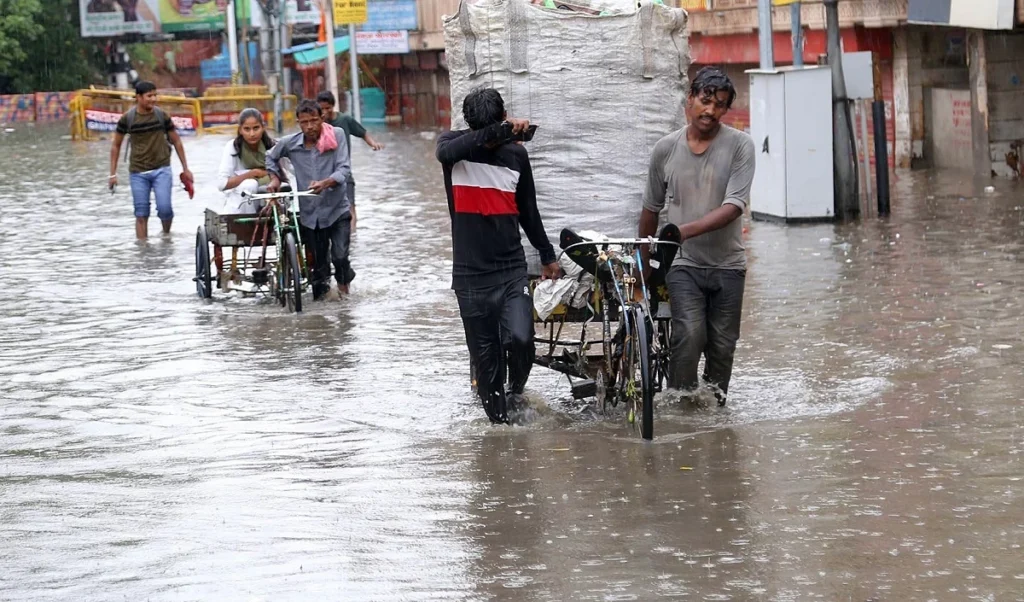Many important information, along with statistics, have been given in a research paper recently completed by Ms. Shamika Ravi, a member of the Economic Advisory Committee of the Indian Prime Minister. In this research paper, along with giving abstract facts based on facts regarding many areas of economic development of India, information has also been given that how rural areas in India are also increasing their contribution to the country’s economy and many states are The economic situation seems to be improving. Besides, it has also been told how the youth of the country are getting the benefit of rapid economic development in India in the form of more employment opportunities.
Today in India, not only the metropolitan cities like Mumbai, Delhi, Kolkata, Chennai, Bangalore, Hyderabad, Pune are participating in the development of the country, but substantial development is also taking place in the rural areas. Due to this, employment opportunities are also being created in these areas. Most development today is taking place in underdeveloped areas. Today, along with Gujarat, Maharashtra, Tamil Nadu, Karnataka, etc., areas of Uttar Pradesh, Madhya Pradesh, Uttarakhand, and North East are also developing rapidly. Many new areas of development have been created. The development gaining momentum in these backward states will help in registering even higher growth in India’s GDP. There has been an incomparable expansion of basic facilities in rural areas, due to which now companies working in the information technology sector are also being encouraged to establish their institutions in rural areas. Some companies, especially in the southern states, have taken good initiatives in this regard. In ancient India, rural areas were the strong centers of economic development. Due to this, the citizens living in these areas also get employment opportunities in their surrounding areas and they do not need to migrate to urban areas.
Also read: Expectations from society in India’s economic progress
Secondly, generally the financial condition of various states of the country has also strengthened. Incomparable improvement has been seen in the budgetary deficit of some states. But, at the same time, in some states like Punjab, Kerala, West Bengal, Himachal Pradesh, etc., the situation of budgetary deficit is becoming pathetic today, which needs to be handled soon because on the one hand, the growth rate in these states is decreasing. Secondly, free schemes are being run indiscriminately by these states, without considering whether there is any scope in their budget for these increased expenses. Such increased expenses ultimately increase pressure on the budgets of these states.
Today, in some states of the country, the entire budget amount gets exhausted in payment of interest, administrative expenses and payment of pension to retired employees. Not only is there no money left to carry out development work in the state, some states even have to take loans to pay for these items, which increases the pressure on the budget. Capital expenditure is being reduced in these states due to which the per capita income in these states is also low and these states are not able to achieve the rate of development. Till the last 10 years, a large part of the budget was spent on capital items in Delhi, but in the last 10 years, there has been a huge decline in capital expenditure. The condition of Punjab has also become very bad. Till only 20 years ago, Punjab was included in the category of richest states in the country, but today its surrounding states, Himachal Pradesh and Haryana, have also overtaken Punjab. There is the greatest need today to establish industries in these states. Industry has moved out of Punjab to Himachal Pradesh and Haryana. Madhya Pradesh and Bihar are registering huge growth in the field of agriculture, but due to small amount of industry, the growth rate in per capita income in these states is comparatively low.
Labor participation and unemployment are two different issues for any country. Labor participation includes those people between the age of 18 to 59 years who are either doing some work to earn money or are eager to do some economic work and are looking for employment for this. The average labor participation rate in China has remained above 75 percent during the last 40 years. That means 3 out of every 4 people are either employed or looking for employment. Labor participation in Vietnam has been between 72 and 73 percent. In Bangladesh it has been more than 60 percent. But labor participation in India was only around 50 percent till 5 years ago, which has increased to 57 percent today. That is, in such a big country, a little less than half of the total working population is either not in employment or is not even looking for employment. This situation is not good for a country like India.
Secondly, unemployment refers to those citizens who are looking for employment but are not getting it. The number of such citizens in India is only 3 percent. The unemployment rate keeps changing slightly over time. But, when this situation is compared between different states, there is a huge difference in the unemployment rate. In states like Gujarat, Chhattisgarh, Karnataka, the unemployment rate ranges between 0.9 to 1.5 percent, while in Kerala it is 12.5 percent. With increase in economic development, more employment opportunities are also created. Therefore, today to create new employment opportunities in the country, business will have to be expanded and development will have to be increased. Only the Central Government and State Governments cannot provide employment to all the citizens. For this, the private sector will have to come forward. There are some limitations in creating employment opportunities for the Central Government and State Government institutions.
Today, the unemployment rate in India among citizens under 30 years of age is 12 percent, while the overall unemployment rate in the country is 3.1 percent. Therefore, the rate of unemployment appears to be high among the youth of the country. There is lack of skills among the youth of the country. Therefore, the Central Government is trying to develop skills among the youth by implementing special programs. Especially for the youth in India, it is being said that they do not want to work till the age of 30, because till this age they keep searching for good employment opportunities. After the age of 30, they start coming under pressure and then they accept whatever employment opportunity they get. Therefore the unemployment rate among citizens above 30 years of age is very low. This situation is also being seen in other countries of the world in recent times. Young people keep waiting for the right employment opportunity in their eyes, or they continue their studies. There is no dearth of employment opportunities today especially in India. Lack of skills and mindset among the youth and choosing only government jobs as employment opportunities are the factors responsible for low labor participation in India. Youth who have obtained more degrees spend a long time in searching for good employment opportunities. Citizens with less degree and less education get employment from a young age. It is also a bitter truth that there is a huge difference between getting a degree and developing skills on the real ground. Even today, many companies in India complain that there are plenty of engineers in the country but there is a huge shortage of highly skilled engineers.
A study conducted in Tamil Nadu has revealed the fact that when citizens of any country get employment at an older age, their total real average income throughout their life reduces significantly. On the contrary, the real average income of the citizens who get employment early in their life increases comparatively much. Startups should be promoted in India and youth should give up their desire for government jobs and try to get employment in the private sector. Besides, today’s youth should also make efforts to start their own businesses.
– Prahlad Sabnani
Retired Deputy General Manager,
state Bank of India
K-8, Chetakpuri Colony,
Jhansi Road, Lashkar,
Gwalior – 474 009



